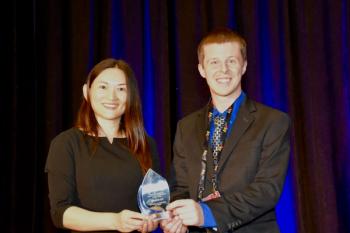
SAIC-Frederick and Applied Research & Photonics Collaborate
Applied Research and Photonics (ARP) and National Cancer Institute (NCI) contractor SAIC-Frederick, Inc. have entered into a collaboration to assess a new technology - tetrahertz spectrometry - for analysis of structures and materials supporting biopharmaceutical manufacturing.
diagnostic tests,
Applied Research and Photonics (ARP) and National Cancer Institute (NCI) contractor SAIC-Frederick, SAIC-Frederick's Biopharmaceutical Development Program will assess Applied and Research Photonics's T-ray technology for identifying chemical compounds in materials related to cGMP manufacturing. The agreement was formed under NCI's Advanced Technology Partnerships Initiative (ATPI), which aims to reduce the time and cut the cost of translating basic research into new preventive measures, and effective, as part of its normal function for biopharmaceutical development, we are confident that the TeraSpectra will make a significant contribution to NCI's mission, " said Anis Rahman, CTO of ARP. He also added, "Presence of residuals in drug formulations is a major source of post-treatment toxicity. Current methods are not sensitive enough to detect a very small amount of residuals left in the drug candidates from the process chemistry. Since terahertz offers very high sensitivity at very low concentrations, it is expected that application of this tool will help solve some critical problems involving the identification and quantification of the residuals in biopharmaceutical products for cancer treatment."
, Inc. have entered into a collaboration to assess a new technology - tetrahertz spectrometry - for analysis of structures and materials supporting biopharmaceutical manufacturing.
Under the Collaboration Agreement, patient-specific treatments for cancer patients.
SAIC-Frederick is facilitating these partnerships. The collaboration will focus on applications of time-domain terahertz spectroscopy to identify chemical compounds. SAIC-Frederick, explores alternatives to traditional methodologies used to support the development of new agents.
We are very pleased to provide the terahertz capabilities in helping the NCI's efforts in fighting cancer. With its parts-per-trillion sensitivity
Newsletter
Get essential updates on the latest spectroscopy technologies, regulatory standards, and best practices—subscribe today to Spectroscopy.




